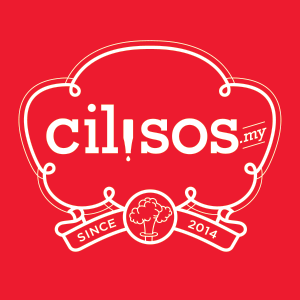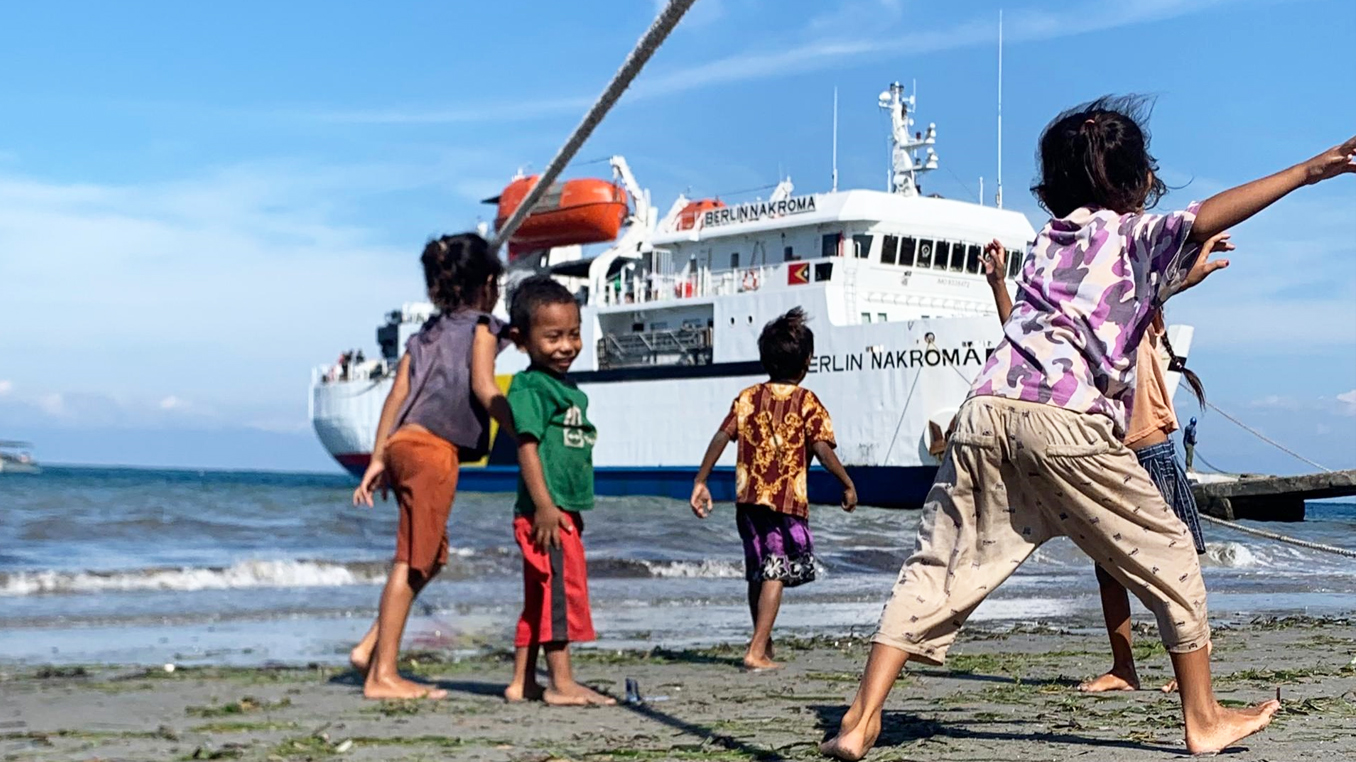Is Timor Leste ready for Malaysian tourists? We went there to find out
7 days ago
When this writer told her mom she was going to Dili on a work trip, the first thing she said was “Why, what’s happening in India?” having confused Dili with Delhi. And honestly, that pretty much sums up how little Malaysians know about Timor Leste, what more its capital city, Dili.
Even when Cilisos got the invite for this media trip, we had to google where exactly this mysterious neighbour of ours was hiding. Turns out, Timor Leste is smack dab within Indonesian territory, about the size of Kelantan and with a population double of Seremban. Beyond these trivia nuggets tho, the internet didn’t tell us much else.
You can say our curiosity nearly broke the Google search bar. What kinda country is this that nobody seems to talk about?
Well, after several days of wandering the streets (and dodging some impressive potholes), chatting with locals, and uncovering some truly wild history… here’s what we found out.
1. Getting to Timor Leste is shockingly easy thanks to Batik Air’s new routeHere’s a little fun fact: there are only six cities in the whole world that have direct flights to Dili. And as of 6th June 2025, Malaysia officially joined that very exclusive club. With Batik Air’s new route, you can hop on a plane at KLIA and gulp down fresh Timor Leste air in just about four hours.
Contrary to what some might think, flight routes don’t just appear because someone woke up feeling extra rajin on a Monday morning. This one was made possible thanks to Malaysia’s Ambassador to Timor Leste, Dato’ Amarjit Singh, who put in some serious legwork. He personally pushed through the red tape, got the right ministries talking and basically made the whole thing happen.
The flight is scheduled twice a week, so your travel dates will need to be a bit flexible. And don’t forget the online declaration form! You have at least five days before your trip to fill it up. Seriously, do it before you land because there’s no roaming for Malaysian telcos in Timor Leste. And also filling things like these at the airport can get super mafan.
On that note, you can grab a local SIM card upon arriving. 10 USD gets you unlimited data which saved our butts more than once.
The moment we stepped off the plane tho, all those travel hassles just melted away. We were greeted with a ceremonial water salute, warm smiles, local goodie bags and our very first taste of Timor Leste’s bold, no nonsense coffee. Not to mention the warm welcome of a traditional dance performance that made us feel like VIPs right from the start.
2. Stepping into Timor Leste feels like walking straight into the 60sIf you’ve ever wondered what Southeast Asia looked like before all the skyscrapers, giant malls and twisty turny highways everywhere, Timor Leste is probably the closest thing to a time machine. The moment we left the airport, it felt like someone drop kicked us into one of our grandparents’ photo albums.
Life moves sloooow here. Even the bus we boarded crawled at a glacial 40km/h all the way to the hotel. The main roads in Dili are generally fine, but the further out you go, the potholes get bigger and the tarmac slowly disappears. So maybe warm up those muscles unless you want some sore bum bums.
As for public transport, there isn’t much. There are no LRTs, no MRTs, not even Grab to rescue your lost tourist soul. Instead, the locals here use Mikrolets which are these cute, colourful minivans that double as the city’s unofficial buses. Why unofficial? Well, you basically flag down the van whenever you see it and let the driver know where you wanna get off.
It sounds fun as heck but you’re better off renting a car from the airport or hiring a local guide to show you around je lah.
And on the topic of travelling, it feels pretty safe to walk the streets altho we didn’t quite go gallivanting at night. Locals are friendly and crime rates are low (and don’t really involve foreigners anyway). But like anywhere else, basic caution is still a good idea. So don’t leave your bags unattended, don’t wander drunk in dark alleys, that sort of thing.
Now, when it comes to accommodation, the options here lean towards the simple and no frills side, with a few exceptions like Hotel Timor and Palm Spring Hotel if you’re after something more atas.
As per the rule we established, the more rural the area, the rougher it gets, so some of those places may or may not have running water and electricity. All in all, don’t be expecting your usual 5-star mega chains.
3. From coral reefs to mountain trails, there’s plenty here for adventurersOne of the places everyone told us to check out was Atauro Island, a small island just off Dili that sits right in the heart of the famous Coral Triangle. Marine biologists apparently lose their minds over this area because the reefs here are said to be some of the most biodiverse in the world. And not to mention the dolphins, whales and pretty Finding Nemo-ish fishes you get to see.
We boarded the ferry early in the morning to head to the island and it takes just about an hour to get there. Don’t forget your nausea pills tho cos the ferry sways all the way to Timbuktu and back. But of course… just our luck. The sea was super choppy (which in retrospect explains the boat ????) and we didn’t get to snorkel or dive. Instead, we bumped along a dirt road in the back of a truck and visited some local shops.
We admired jewellery, bought handmade souvenirs, and tried not to think too much about all the fish we weren’t seeing. And while the beaches were stunning and the waters so clear you can probably see your future in it, we couldn’t shake the feeling that there had to be more to Timor Leste than just sea and sand.
That naggy little thought was quelled during one of our last dinners, when they screened a short film about the country. And it was right then that it genuinely hit us that there’s so much more here we didn’t even come close to seeing.
Beyond the beaches lie mountains, off-road trails and hikes that lead to places like Mt. Ramelau, the tallest peak in the country. There’s mountain biking and jungle trekking. There’s legit adventure waiting here, but these aren’t things you can cram into a weekend trip. You’ll need more time, better shoes and mayhaps some guts to ditch the usual tourist path.
4. If you can’t tahan all these aktiviti lasak, there’s always some kopi to seeThat said, not everyone goes on holiday to sweat buckets and conquer mountains. Some of us (aka this writer) just wanna relax, maybe touch some grass and pretend life’s not stressing us out back home. And for that, Timor Leste actually delivers quite nicely.
On our second day, we took a slow, scenic drive up to the highlands of Ermera. Nearly half the country’s coffee comes from here and we got to visit Cooperativa Café Timor (CCT), a farmer-run coffee co-op that helps some 27,000 local farmers grow better beans, earn better money, and even get healthcare support.
And yes… we got to see coffee cherries still on the tree. Like legit red little berries that eventually become the overpriced latte you cry over at Starbucks. Speaking of which – surprise, surprise – some of Timor Leste’s beans do end up in Starbucks worldwide. So you might have already had your first literal taste of this country without even realising it.
But if coffee isn’t your cup of… uh, coffee, there’s other stuff to see. Like an old Portuguese-era prison or this Cristo Rei statue (their version of Rio’s Christ the Redeemer).
We also made a pitstop at a nearby traditional village. Honestly, it looked like something you’d find on a postcard. You have your pet wild boar in the background, some coffee beans drying under the hot sun and kids running all around.
And as if that wasn’t enough of a village aesthetic, there were these tall wooden huts called uma lulik, which are sacred houses where the villagers hold ceremonies to reconnect with their ancestors. Once or twice a year, families from near and far return to take part in prayers and blessings, and (from what we were told) some pretty epic feasting.
5 . You won’t survive this place on your credit card, but you can on the foodOne thing we were told before our trip is that credit cards are absolutely useless here, as in they don’t even have the machinery to swipe your cards. And ATMs are few and far in between, so you need to load up on all your cash before coming over. Also one teeny tiny thing to mention, the currency is in USD. Yes, Big. Fat. American. $$$.
Price-wise, things can get pretty expensive if you’re leaning towards the super established places, like Palm Spring Hotel where we stayed. The cost for a night was around a kidney selling 250USD (that’s over RM1k ????????). Food, on the other hand, can range anywhere between 5USD to 25USD depending on whether you’re getting a simple dish, a whole course meal or if you have the appetite of a hippo.
We went to some really nice restaurants and would totally recommend them to yall, like the Pro-Ema Restaurant School, which was started by Casa Vida, an NGO that helps abused girls. Not only are you supporting a good cause, but the food is honestly slurp slurp.
Another standout was this Malaysian restaurant, Gia, named after its Sabahan owner. She moved to Dili in 2002 and has been serving classic Malaysian food ever since. Before opening this place, she was actually the personal cook for the American ambassador (!!) and before that, she was managing another restaurant with a partner.
And on whether she likes it in Timor Leste, Gia only had good things to say.
To really hammer in that homely feeling, the people here can speak Bahasa. While Portuguese and Tetum are their official languages, a lot of the locals especially the older generation can still speak it from the time Indonesia occupied Timor Leste. So if your BM is half decent, you can sembang with the market aunties and even bargain (not too much tho ????) for souvenirs.
6. The real heart of Timor Leste is its people and their storiesWe expected beaches. We expected mountains. What we didn’t expect was to be charmed by the people themselves. Even before we landed, we kinda got a taste of that when Timor Leste’s Prime Minister literally handed out candies to the Malaysian media during the ASEAN Summit. Like what PM does that??
That small moment pretty much sums them up. They’re warm, sincere and so welcoming, whether it was the tour guides, the local ministers, or the villagers who patiently smiled while we snapped photo after photo like every tree and goat was a sight to behold.
But the more you learn about their past, the more that friendliness hits you in the chest a little. This is a country that’s been through a lot. They were colonised by the Portuguese in the 1500s, invaded by Indonesia in 1975, and only clawed their way to independence in 2002 which is crazy recent if you think about it. And between all of that was decades of brutal occupation, violence and what many describe as genocide.
You’d think that’s the kind of history that would make most people bitter, but not here. We were actually told that those living at the border between Timor Leste and West Timor (Indonesia), are some of the most peaceful people around.
But ofc, being nice doesn’t exactly keep the economy running. Timor Leste is still a poor country. Their biggest export is oil and that’s slowly running out. After that, it’s coffee and that’s nowhere near the scale of Malaysia’s getah or palm oil industry. And because of all the years of hardship, they’re still dealing with a lot of leftover issues like land disputes, domestic abuse, squatting, even clean water shortages.
Which is why tourism feels like such a big deal for them. You can tell they want more people to come and see the beauty of their country. They just don’t have the budget or the big shiny campaigns to compete with their neighbours yet.
7. It’s not exactly a budget destination but the memories will really stick with youLet’s get this out of the way… Timor Leste isn’t cheap. Mostly because a lot of their businesses are catered towards foreigners (you’d be hard pressed finding a local staying at Palm Spring Hotel just for funsies). And by foreigners, we mean those with serious spending power, not broke Malaysian content writers trying to stretch their pocket money.
Even simple groceries can get pricey, because so much of it is imported. We actually caught ourselves doing mental Ringgit-to-USD conversions way too many times, debating if a bite size snack is really worth RM18.
But if you can afford the splurge, it’s worth your while for real. Sure, the roads are a bit rough, the ferry ride might shake your insides and the power goes out once in a while. But that’s just how it is and you weirdly end up liking it for that.
The best way to put it is there’s no pretense here. You leave feeling like you’ve actually been somewhere, like you caught a rare glimpse of a Southeast Asia that didn’t trade its hills and rivers for glass towers and endless traffic jams. Honestly, dare we say, no place has air as fresh as Timor Leste. And trust us, you’ll come back with photos nobody else at your makan table can match.
...Read the fullstory
It's better on the More. News app
✅ It’s fast
✅ It’s easy to use
✅ It’s free









